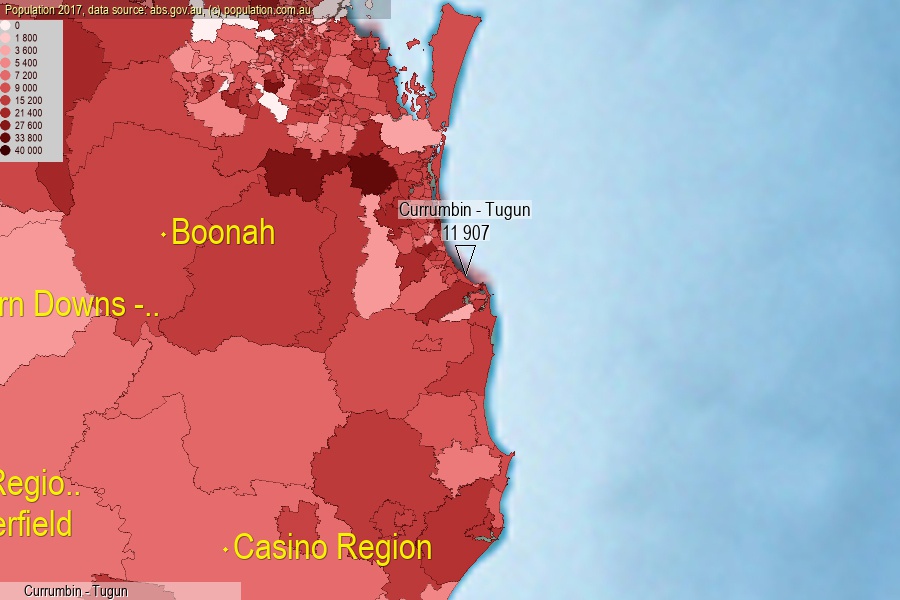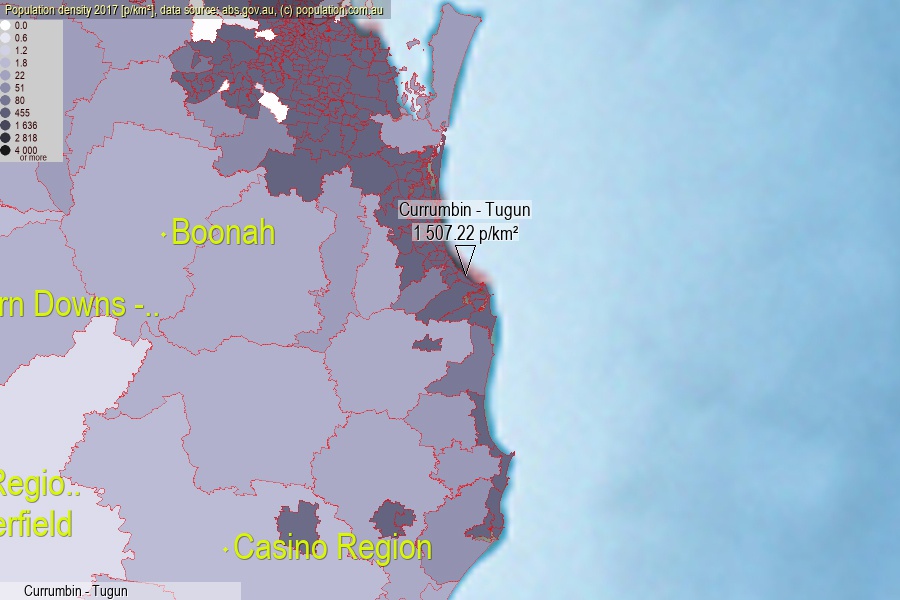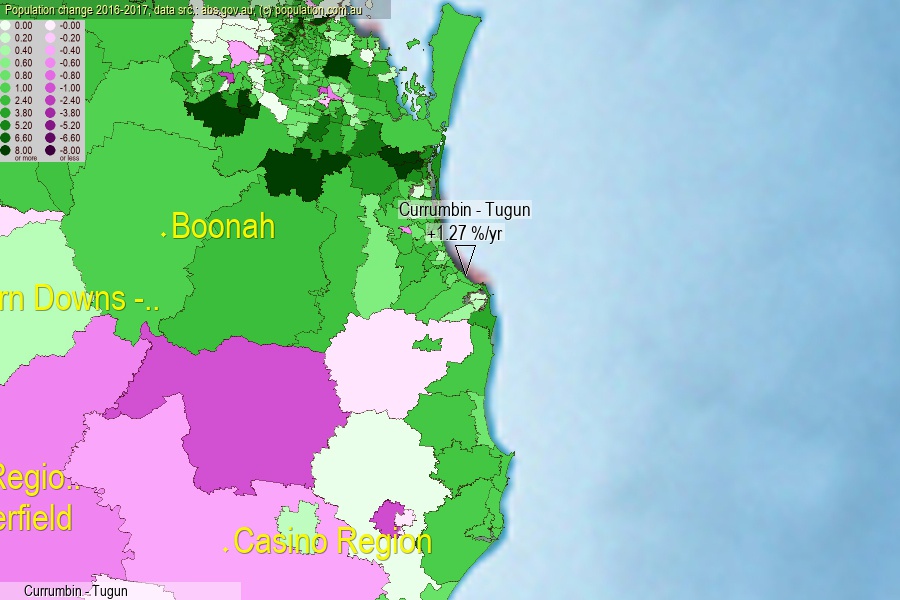 population.com.au
population.com.auLast official estimated population of Currumbin - Tugun (as Statistical Area Level 2) was 11 907 people (on 2017-06-30)[2]. This was 0.05% of total Australian population and 0.239% of QLD population. Area of Currumbin - Tugun is 7.90 km², in this year population density was 1 507.22 p/km² . If population growth rate would be same as in period 2016-2017 (+1.27%/yr), Currumbin - Tugun population in 2025 would be 13 169. [0]



Click to enlarge. Currumbin - Tugun is located in the center of the images.
Population [people], population density [p./km²] and population change [%/year] [2]
View borders » (new window) [4]
[1991-1992] +1.61 %/Yr.
[1992-1993] +1.96 %/Yr.
[1993-1994] -0.18 %/Yr.
[1994-1995] +2.00 %/Yr.
[1995-1996] +1.72 %/Yr.
[1996-1997] +2.10 %/Yr.
[1997-1998] +2.00 %/Yr.
[1998-1999] +3.79 %/Yr.
[1999-2000] +4.06 %/Yr.
[2000-2001] +2.08 %/Yr.
[2001-2002] +1.77 %/Yr.
[2002-2003] +2.27 %/Yr.
[2003-2004] +0.76 %/Yr.
[2004-2005] +0.83 %/Yr.
[2005-2006] +1.59 %/Yr.
[2006-2007] +1.41 %/Yr.
[2007-2008] -0.10 %/Yr.
[2008-2009] +1.13 %/Yr.
[2009-2010] +2.49 %/Yr.
[2010-2011] +3.04 %/Yr.
[2011-2012] +1.95 %/Yr.
[2012-2013] +1.55 %/Yr.
[2013-2014] +1.01 %/Yr.
[2014-2015] +1.14 %/Yr.
[2015-2016] +2.34 %/Yr.
[2016-2017] +1.27 %/Yr.
[0] Calculated with linear interpolation from officially estimated population
[1] Read more about SA2 and Australian Statistical Geography Standard (ASGS) on abs.gov.au
[2] Population data from Australian Bureau of Statistics (Population and density: 2017; change: 2016-2017)
[3] Digital Boundaries: Australian Statistical Geography Standard (ASGS) 2016.
[4] Border coordinates are simplifyed using Ramer-Douglas-Peucker algorithm.